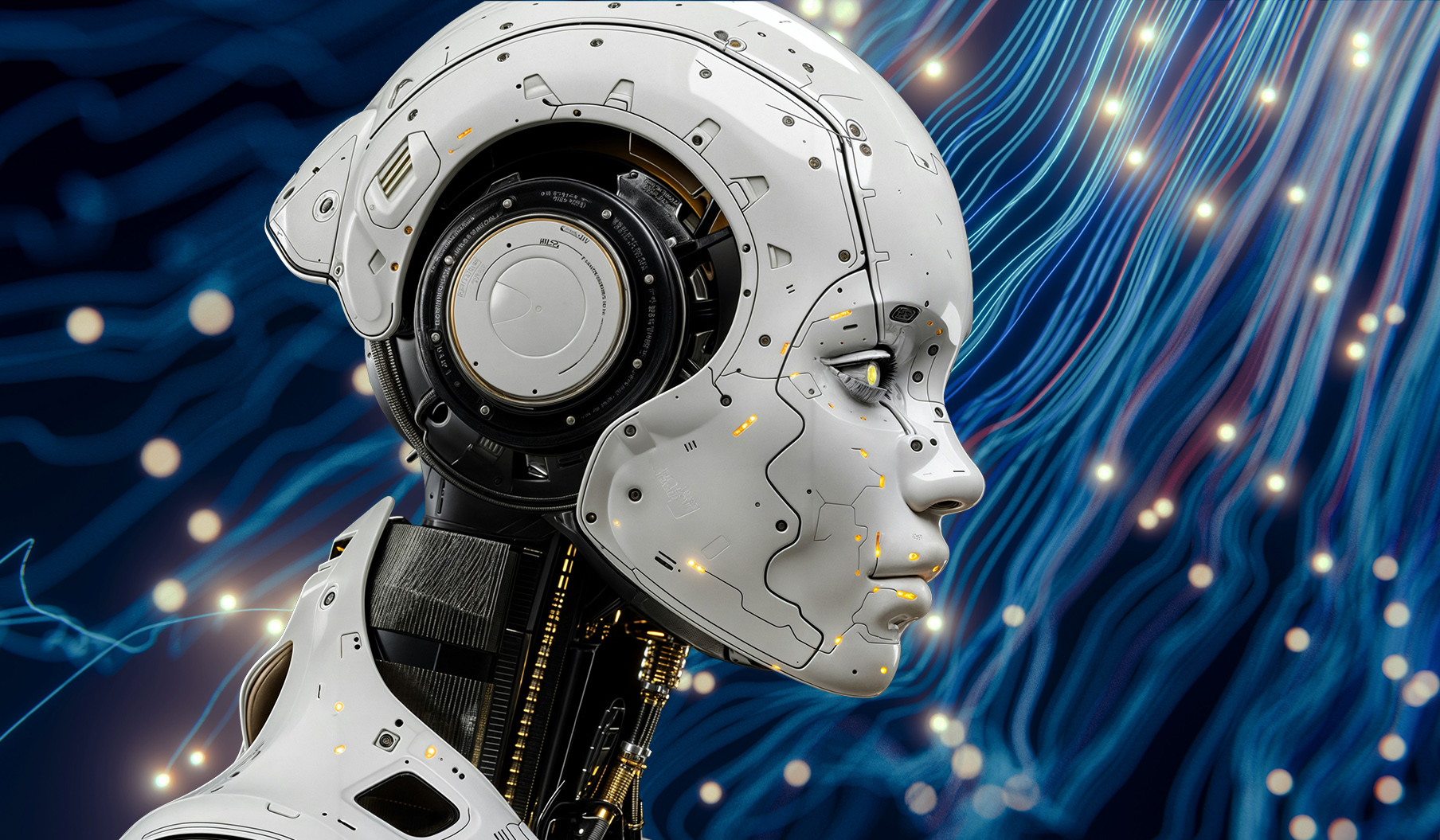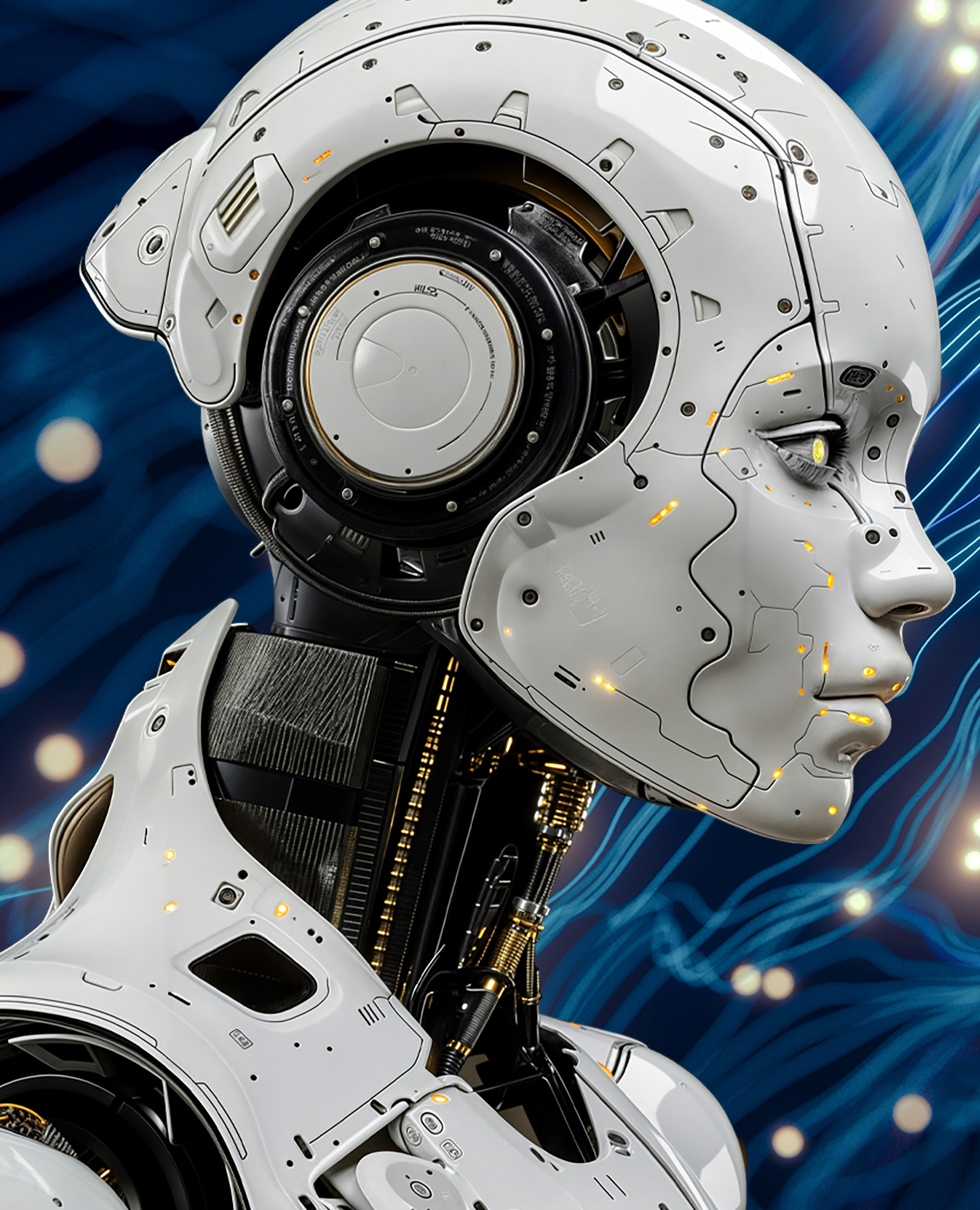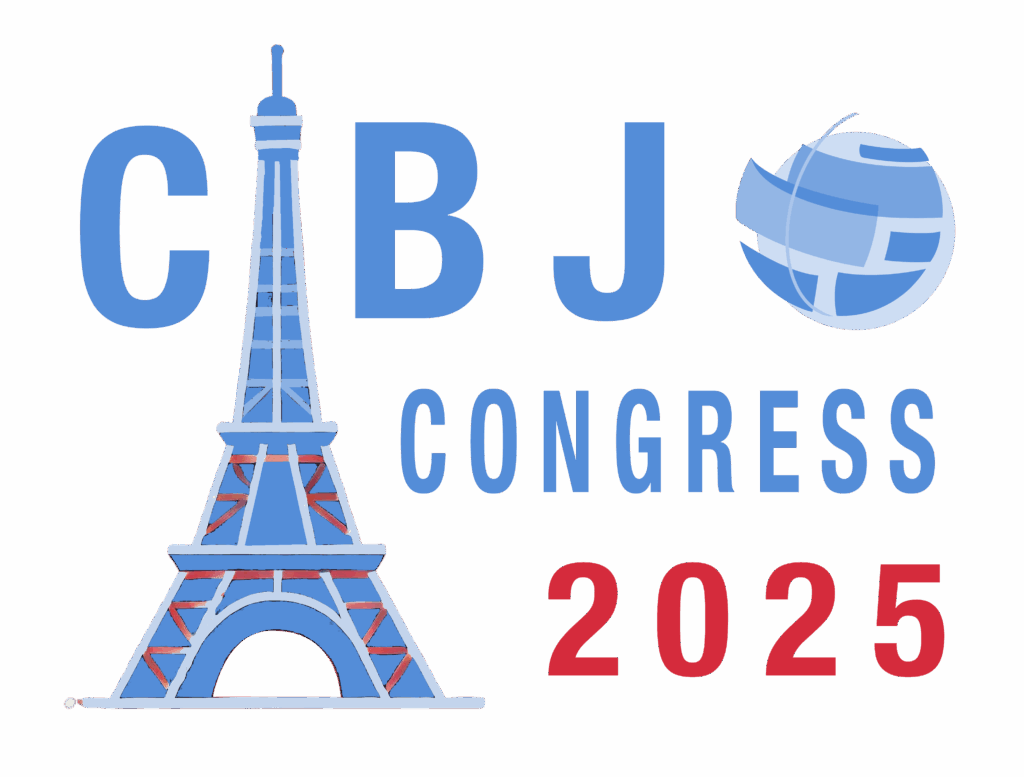SPECIAL REPORT
TECHNOLOGY


PHOTO CREDIT: Photos by Luke Jones and Gabriele Malaspina on Unsplash.
AI and the jewellery industry:
transformation, challenges and opportunities

By Stéphane Fischler
Chair
CIBJO Technology Commisttee
OCTOBER 23, 2025
Just hours after receiving the call that informed him that he has been selected as one this year’s three Nobel Prize laureates for Economics, Joseph Mokyr addressed a press conference at Northwestern University in Chicago. Within minutes, the professor who had just been recognised for his research into innovation-driven economic growth, was quizzed by journalists about how he viewed the impact on business and society of artificial intelligence.
“Everywhere I go, people ask me questions about AI,” Mokyr remarked. “It’s a notion that somehow AI is this monstrosity that lurks somewhere beneath on the level, and eventually comes to drive the human race into extinction and take over the planet. If you have read too much dystopian science fiction, nothing of the sort is ever going to happen.”
“In fact, the whole idea that machines are more intelligent than we are seems to assume that intelligence is a single metric,” he continued. “It’s always been the case that we use machines to do things that we can’t do ourselves, because our senses and the size of our brain aren’t good enough.”
AI is a tool that can improve the world, Mokyr insisted.

AI has opened up a whole new stream of activity helping businesses to train their teams on how the technology makes them bigger, better, faster, stronger, but does not replaces them. It is a skill set. It is not intuitive, and it requires mindset shifts and outside-of-the-box thinking. It can be challenging, even for the best of us.”
Elle Hill, Hill & Co., Technology Committee member
AI is neither inherently good nor bad. Its success depends on how it is used.
The most simple and the most advanced tools can create value or do harm depending on their accuracy, intent, context and governance. In the jewellery industry, the organisations that succeed in integrating AI creatively, strategically and ethically will see productivity soar while remaining firmly in charge of the decision-making process.
It is not perfection but flaws that often make both people and jewellery attractive. In jewellery design, uniqueness often comes from asymmetry, imperfections or natural characteristics of gemstones. Similarly, the implementation of AI implementation should not imply flawless automation.
But AI will win our trust by allowing human intellect, creativity and emotion to shine.

AI empowers us to uncover the subtle nuances of our industry, validate insights once thought intangible, and transform them into tangible opportunities that can elevate our entire industry.
Mahiar Borhanjoo, De Beers, Technology Committee member
AI Implementation in organisations
Adopting AI is not simply about installing new technology. It requires rethinking workflows, retraining staff, and reshaping company culture. Retailers, designers and manufacturers must invest in structured implementation strategies. Without careful roll-out, AI risks either becoming underutilised or impacting interactive processes and creating mistrust within teams.
In-house expertise is critical to understand the capabilities and limitations of AI, as well as correctly interpreting outputs.
SMEs need to carefully identify their business needs and make sure they have the availability of resources to ensure the necessary infrastructure, data and talent in place to maximize their return.
The jewellery sector, which instinctively prioritises heritage and craftsmanship, has traditionally been cautious in adopting new technologies. But AI requires experimentation and calculated risk-taking. From generative design to forecasting, companies must create “safe to fail” spaces where proposed solutions are debated and innovation is encouraged.
The historian Yuval Noah Harari commented recently during a live FT interview that AI is the first technology that is not a “tool” but an “agent” capable, if allowed, of making decisions, which can learn and change independently.
And, as we already know, AI can be used to manipulate information, design outcomes, or even distort consumer perceptions. Hackers, as noted by Gil Messing of Check Point, are now able to “hit more targets with less effort” through AI. In luxury jewellery, this creates risks of counterfeit imagery, fake branding, or cyberattacks on CAD design libraries.

I have a team of 11 people in my company now and plan to remain 11 in the future, empowering each of my employees with AI tools so that they can amplify their tasks and outputs.
Thomas Baillod, BA111OD, Technology Committee member
Empowering personnel while allaying anxiety
Adopting AI is not simply about installing new technology. It requires rethinking workflows, retraining staff, and reshaping company culture. Retailers, designers and manufacturers must invest in structured implementation strategies. Without careful roll-out, AI risks either becoming underutilised or impacting interactive processes and creating mistrust within teams.
For retailers, AI has the capacity to radically streamline inventory management, as well as optimise pricing strategy. These should portend better growth and review prospects, but this is unlikely to allay anxiety among members of staff.
The adoption of AI is as much about psychology as technology. Early resistance from personnel is natural, particularly in the creative fields. But once employees understand that AI supports and amplifies their value rather than erasing it, acceptance grows.
Rather than shrinking your workforce, AI offers the opportunity to increase productivity per person, strengthening both consumer experience and operational capacity.
This transition highlights the importance of clear communication and training when implementing AI.
Jewellery companies, not traditionally tech-heavy, must rely on expert AI/IT teams to ensure smooth and secure integration. They will help manage interoperability, safeguard consumer and design data, and act as bridges between artisans and technology. Without expert oversight, AI adoption risks costly mistakes, security breaches and loss of trust.

In the beginning I saw a lot of objection to AI within our teams (marketing, R&D, legal, business), but, after they understood that it helped them do their job better rather than replacing them, they embraced it.
David Block, Sarine Technologies,Technology Committee member
Impact on jewellery Consumers
Trust has always been the cornerstone of jewellery retail. AI can strengthen it by offering transparency (for example, through fully automated grading and certification), but also threatens it if overused or poorly explained. Consumers may wonder about unique creativity.
For jewellers, success lies in shaping consumer perception — positioning AI not as a substitute for artistry, but as a trusted partner that safeguards authenticity, supports creativity and the human connection that defines luxury.
Winning trust requires careful balance between AI efficiency and human assurance.
For consumers, AI enables personalised recommendations, immersive AR/VR shopping, and rapid responsiveness to design preferences. Yet it also raises questions of authenticity – will AI-enhanced jewellery feel less “authentic” to buyers who prize craftsmanship?
Consumer perception is a decisive factor in the adoption of AI within jewellery. While some customers will welcome AI-enabled personalisation, immersive try-ons, and faster service, others will remain cautious, particularly in the luxury segment where the old-time values of heritage, craftsmanship, and authenticity are central to value.
AI has the power to transform how jewellers interact with clients:
- Hyper-Personalisation: Recommendations tailored to individual tastes.
- Co-Creation: Consumers actively collaborate in design, adjusting features in real-time.
- Immersive Shopping: Virtual try-ons and AI-enhanced boutiques blend digital and physical experiences.
- Provenance Storytelling: Rich narratives around sourcing and craftsmanship, powered by AI.
- After-Sales Engagement: Continuous AI-driven service, from care reminders, new product lines to personalised suggestions.
- Emotional Trust: By handling repetitive tasks, AI frees human staff to focus on empathy, storytelling, and deepening relationships.

AI is best used to support and assist humans. As such it massively increases efficiency and productivity. It does not replacing human work, but it fundamentally changes it
Daniel Nyfeler, Gübelin, Technology Committee member
Younger consumers and digital natives tend to view AI as a natural extension of modern retail. They often appreciate AI’s ability to curate designs that reflect personal tastes, simplify selection, and create interactive experiences.
But for higher-value pieces, consumers may question whether AI-generated designs lack the soul of human craftsmanship. Concerns about data privacy, counterfeit risks, and “machine-made” aesthetics can also undermine confidence.
Jewellery buyers often value a story — the artisan’s hand, the rarity of the stone or the cultural symbolism. AI’s role must therefore be carefully framed as supportive of these values rather than eroding them.
Consumer comfort may depend on transparently communicating the role played by AI – for example using terminology like “AI-assisted design” or “AI-supported grading.” Openness should reassure them that technology is enhancing, not replacing tradition.

We experienced that accurate data can lead to false conclusions if their context is not properly interpreted.
Emmanuel Piat, Maison Piat, Technology Committee member
The pitfalls of new technology
It would be naïve to ignore the elements of risk involved in embracing AI, especially at this point in time where its future direction and evolution are difficult to predict.
Luxury jewellery thrives on stories of artisanship and human connection. Over-automation risks stripping away this aura. A necklace that feels “machine-made” may lack the emotional resonance of one crafted by hand. The challenge is ensuring AI supports artisanship rather than overshadowing it.
There is also a serious risk that recommendation algorithms are narrowing exposure by reinforcing mainstream tastes, creating cultural “monocultures” where only a few styles dominate globally.
Global tensions, including ongoing tariff wars, may restrict access to the most advanced AI models, chips, and infrastructure. This could create uneven playing fields: Asian manufacturers may have cheaper access to AI, while European jewellers could face stricter regulations and the US restrictions on AI provenance. Geopolitics is now part of competitive strategy in jewellery.
There are other, more insidious risks. AI, for example, challenges long-established norms of IP in jewellery. We need to ask ourselves, who owns AI-generated designs?Proprietary designs may be absorbed into training datasets without permission.
Counterfeiting is an issue. Generative AI can mass-replicate luxury designs and branding, and the line between inspiration and theft blurs at scale..
Jewellers must strengthen legal protections, monitor markets, and use controlled AI environments with expert IT teams to safeguard IP.
A multiplier, not a replacement
In summary, AI should not be a replacement for the artistry, heritage, preciousness and human relationships that traditionally have defined jewellery. Instead, it is a tool that can magnify them — if implemented with knowledge and care.
The industry faces risks from over-automation, IP theft, geopolitical tensions, and consumer scepticism. One also should always be aware that AI is fully dependent on hardware and software infrastructure, requiring massive amounts of generated power. It is also not immune to occasional failure. So, securing one’s own data at all times will remain critical.
Yet the opportunities are equally profound. AI offers more personalised experiences, more efficient operations, and stronger consumer trust.
The future of jewellery in the AI era will not be defined by technology alone but by how companies balance innovation with tradition, automation with human interaction, and efficiency with trust.










